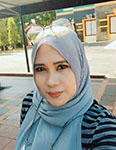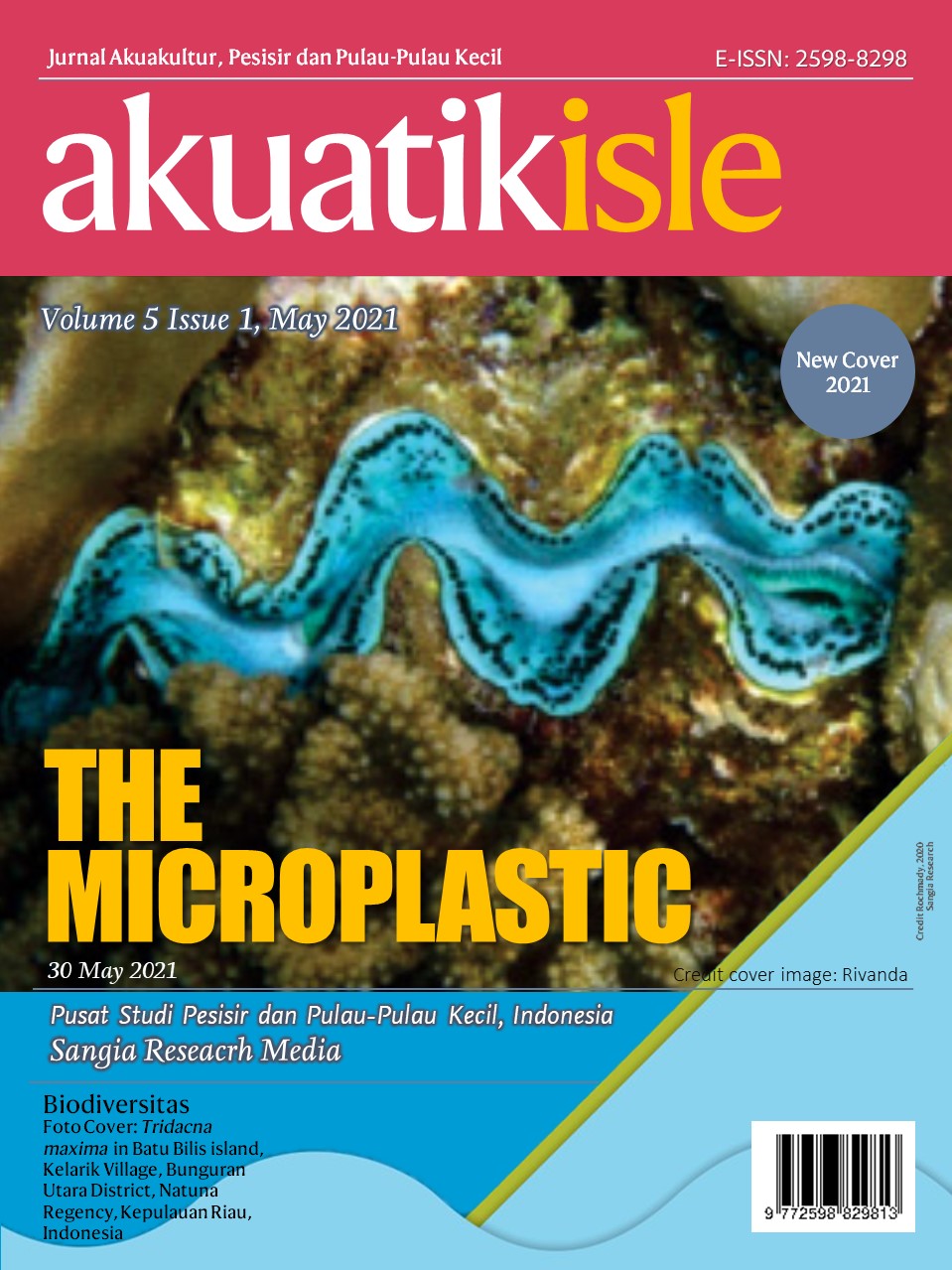Akuatikisle: Jurnal Akuakultur, Pesisir dan Pulau-Pulau Kecil
Full Length Article
Composition of types fishing gear in Barru regency waters in the pandemic time of Covid-19
Highlights
Generate NLP AI by Wizdam ID.
Abstract
The potential of marine fish resources in Districts Barru is multi-species, especially pelagic fish. Therefore, in the management and utilization of fishery resources it is very possible for the community to be able to operate various fishing gear. This study aims to determine the composition of the types of fishing gear operated by fishermen in Barru Districts waters of during the pandemic Covid 19. Data collection was carried out from September to October 2020 in around the waters and coastal areas in Barru Districts. This study used a descriptive survey method, by collecting available data (secondary data) in the form of: categories of types and numbers of fishing gears. besides that, field observations will also be carried out. During the pandemic Covid-19, the operation of fishing gear in Barru Districts waters was 13 types of fishing gear, with a composition consisting of four types of fishing gears that were predominantly used, namely 622 drifting gill nets (28.4%), hand lines (21, 7%), Bottom gill nets (19.9%), trolling line (9.6%). Meanwhile, the least used fishing gear was 8 Bagan Tancap (lift net) (0.4%).
Keywords
Introduction
Section snippets
Material and Methods
Materials and methods from the full-text PDF of this article cannot be displayed.
Results
Results from the full-text PDF of this article cannot be displayed.
Discussion
Discussion from the full-text PDF of this article cannot be displayed.
Conclusions
Conclusions from the full-text PDF of this article cannot be displayed.
Acknowledgment
Acknowledgment from the full-text PDF of this article cannot be displayed.
Funding Information
Penelitian dibiayai oleh DIPA 2020 Politeknik Pertanian Negeri Pangkajene Kepulauan
Competing interest
The authors declare that they have no known competing financial interests or personal relationships that could have appeared to influence the work reported in this paper.
Conflict of interest
The authors declare that the research was conducted in the absence of any commercial or financial relationships that could be construed as a potential conflict of interest.
Ethical approval acknowledgements
No ethical approval required for this article. All procedures followed were in accordance with the ethical standards of the responsible committee on human experimentation (institutional and national) and with the Helsinki Declaration of 1975, as revised in 2008 (5)
Supplementary files
Data sharing not applicable to this article as no datasets were generated or analysed during the current study, and/or contains supplementary material, which is available to authorized users.
References (11)
Arifin, T., Ramdhan, M., Mustikasari, E., & Heriati, A. 2014. Model Pengelolaan Kawasan Pesisir & Pulau-Pulau Kecil Berbasis Zonasi di Kabupaten Barru, Sulawesi Selatan. Pusat Penelitian dan Pengembangan Sumberdaya Laut dan Pesisir. Badan Riset dan Sumber Daya Manusia Kelautan dan Perikan. Kementerian Kelautan dan Perikanan, Indonesia.
Ayodhyoa, A.U. 1981. Metode Penangkapan Ikan. Yayasan Dewi Sri. Bogor.
Badan Pusat Statistik Kabupaten Barru, 2015. https://barrukab.bps.go.id. Diakses 18 Juli 2020
Brandt A. V 2005. Fish Catching Methods of the World. London: Fishing News Book.
[DKP] Dinas Perikanan Kabupaten Barru, 2013. Laporan Tahunan Dinas Kelautan dan Perikanan Kabupaten Barru. Pemerintah Kabupaten Barru Dinas Kelautan dan Perikanan. Barru.
[DKP] Dinas Perikanan Kabupaten Barru, 2019. Statistik Perikanan Kabupaten Barru. Laporan Tahunan Dinas Perikanan Kabupaten Barru. Barru.
Effendi, S & Tukiran. 2014. Metode Penelitian Survei. LP3ES. Jakarta.
Kementerian Kelautan dan Perikanan. 2010. Kepmen NOMOR KEP.06/MEN/2010, Tentang Alat Penangkapan Ikan Di Wilayah Pengelolaan Perikanan Negara Republik Indonesia.
Kementerian Kelautan dan Perikanan. 2016. Kepmen NO.71/PERMEN-KP/2016 Tentang Jalur Penangkapan Ikan Dan Penempatan Alat Penangkapan Ikan Di Wilayah Pengelolaan Perikanan Negara Republik Indonesia.
Nuraini, S. 2000. Identifikasi Kekayaan Jenis Ikan dan Penangkapannya di Teluk BantenSerangdalam Seminar Identifikasi Potensi dan Permasalahan Pengelolaan Kawasan Teluk Banten, Serang.
Sudirman. 2013. Mengenal Alat dan Metode Penangkapan Ikan. Penerbit Rineka Cipta. Jakarta.
Bibliographic Information
Cite this article as:
-
Submitted
27 November 2020 -
Revised
29 November 2020 -
Accepted
21 May 2021 -
Published
29 May 2021 -
Version of record
26 June 2021 -
Issue date
30 May 2021
-
Academic subject
Fisheries Science; Capturing Fish
Keywords
Copyright
Sangia Advertisement
At the first time, plastic materials were produced to facilitate various activities of human life. Plastic materials that are flexible and durable pollution both on land and the sea. Plastic materials that are not managed properly can contaminate human and life, either directly or indirectly to food sources, especially food from the sea.
Copyright © 2021 Hasmawati, Adam, Muhammad Aras, Salman. Sangia Research Media and Publishing. Production and hosting by Sangia (SRM™).  This work is licensed under a Creative Commons Attribution-ShareAlike 4.0 International License.
This work is licensed under a Creative Commons Attribution-ShareAlike 4.0 International License.
Disclaimer: All claims expressed in this article are solely those of the authors and do not necessarily represent those of their affiliated organizations, or those of the publisher, the editors and the reviewers. Any product that may be evaluated in this article or claim that may be made by its manufacturer is not guaranteed or endorsed by the publisher.
Comments on this article
By submitting a comment you agree to abide by our Terms and Community Guidelines. If you find something abusive or that does not comply with our terms or guidelines please flag it as inappropriate.









